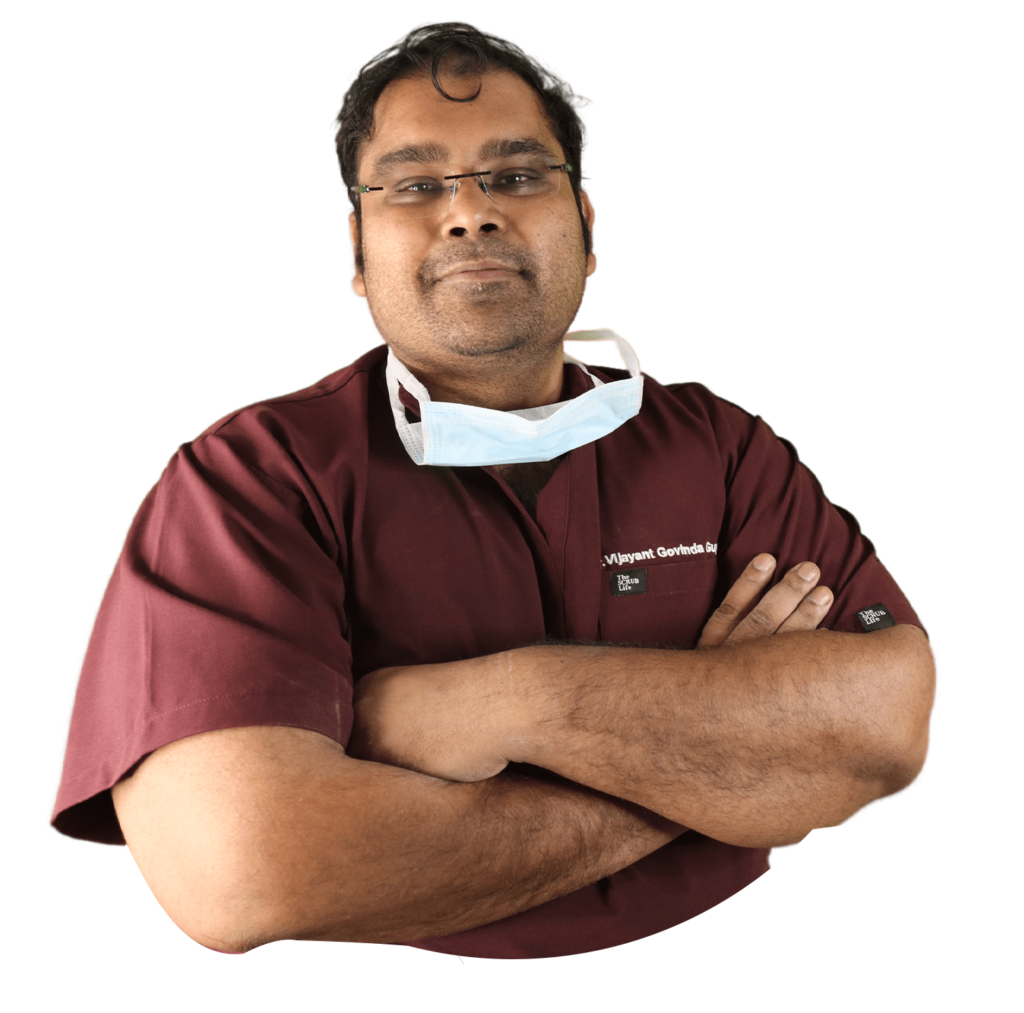These pointers if followed in Implant Technique will minimize complications and prevent infections in Penile implant Surgery. Dr. Vijayant Govinda Gupta has ZERO INFECTION RATE for past 3 years (2019 – 22)
Complications will happen – we have to minimize them
Pre Operative Preparation
- Patient Optimization
- OT Optimization
- Staff training
- Infection Control
- Good technique
Patient Optimize
- Control Diabetes
- Stop Smoking
- PAC Fitness
- Perineal Hygiene – Correct balanitis / Cutaneous infections
- Hernia / Hydrocele / Stricture / LUTS
- Manage Prostate before surgery – Stable Uroflow for 6 months
- Preop sterile urine culture
Operation Theatre Optimization before Penile Implants
- OT Infection control
- Microbiological surveillance
- AHU
- Autoclave
- Consumables ETO
- Quality antibiotics
- Dedicated implant OT better
Staff training
- Dedicated staff for implants
- Minimum numbers in OT
- Closed OT once case is on
- Checklist before starting
Infection Control in Penile Implants
- From OPD to Home – Zero break in Care
- Post Op Dressing not required – OT dressing for 5 days
Good technique
- Quick in and out (15 minutes malleable 35 minutes inflatable)
- Clean cuts
- Minimum sutures
- Minimum air exposure
Antibiotic Usage before Penile Implants
Monocef plus Vancomycin (Broad Spectrum plus MRSA) 2 doses one in OT, One next day
Antibiotic Lavage – Vanco plus Genta plus Fluconazole
No antibiotic on discharge
Post OP Care
Penile block
Remove Foleys next day morning
Discharge
Follow up after 5 days malleable
15 days Inflatable
But then again 97% of time, everything is well when you come to hospital but we will have major complications in 3% of time if they happens, then we have to minimize.
How do we do a good preoperative preparation in Penile Implants.
It is patient optimization, OT optimization, staff training infection control and good technique.
So patient optimization includes 1.control diabetes, 2.stop smoking, 3.PAC fitness 4.perineal hygiene-correct balanitis or any cutaneous infection 5.Hernia/Hydrocele/stricture/LUTS.
In case of hernia hydrocele, if you are planning for an inflatable then definitely you can operate it at the same time as hernia is sterile, but I don’t like to operate hernia at the same time because I feel that hernia fluid will contaminate my surgical field.
So hernia is usually managed earlier Sorry! Hydrocele.
I have done cases in hernia where we have done a right sided Lap hernia and I have done the placement on the left side I can see where I’m going in laparoscopy, it is very comfortable surgeon is above and we put it from below so hernia is not an issue because it’s again implant but it can be done
6. manage prostate before surgery-stable uroflow for at least 6 months.
If the patient has a lot of urgency symptoms what I do is that the first set of first case and second set of second case would already be ready third set of third case by that time the first is already ready.
We only use consumables that are disposable we use only disposable sheets, plastic drapes, IO ban we are not using anything else, not linen we even use disposable gowns.
Quality antibiotics : In antibiotics, we have taken care to use only 2 doses so we only get quality antibiotics, they are a little expensive but still hospital does that.
Dedicated implant OT is better. Actually in our Apollo spectra there are 3 OT – one OT is orthopedics, they are doing TKR, THR. One OT is managed between me on three days in a week mostly spine surgery is done there on other three days so it is a non-infected OT. There is another OT where gyno surgeries, piles and everything is done. My OT is not used for any of these case, so no cesarean and nothing.
Staff training- Dedicated staff for implant my sisters, scrub nurse, is all fixed minimum number of them in OT so no movement. I have nothing in my OT so there is no C-arm, monitor, computer -nothing! So there is an anesthesia trolley and my assistant that is all!
Closed OT once the case is on- we have that once the OT is on, we close it and we have a AHU and positive pressure ventilation and a checklist.
We have a checklist for everything- antibiotics, diabetes So we have made our own checklist so we do that Infection control from OPD to home-zero break in care. We start taking precaution from the OPD itself that diabetes is controlled, parts are prepared on time, there are no scratches there is no balanitis.
If there is balanitis then we will do ZSR Circumcision before.
If there is any culture, it is always sterilised and we don’t do post-operational dressing so whatever dressing I do in the OT, patient goes home with that it is opened after 5 days.
So, we don’t allow anybody to touch the wound the foley of wound is removed the next day, that’s all.
Now the good technique, I take 15 minutes for malleable and 35 minutes for inflatable which is skin to skin, so it’s there clean cuts, minimum sutures- we don’t use too many sutures the suture I’m using is vicryl and I have a good result with it but most of the standered centres use monofilament , they don’t want to use to use polyfilament. But I have been using vicryl since the beginning and it was basically that the duct was not available in PDS there and now my hand is very good with vicryl but at some point I want to shift to PDS in the future.
Minimum air exposure so as less irrigation If you look in many centres, they will show you that you have to irrigate large quantities I use only 20 ml of irrigation and that is all, no more irrigation minimum exposure is maximum infection control.
My antibiotic usage is monocef plus vancomycin, we have to put a broad spectrum antibiotic plus MRSA The most common cause of infection is skin commensal we give this in two doses, one in OT and one on next day
Antibiotic lavage-I do it 20ml-50ml we put vancomycin, gentamicin and fluconazol in the lavage.
We started adding fluconazole recently. I have never had fungal infection but there was a recent report in U.S that fungal infection are increasing because of the fungal contaminations of the saline bottles they recommended to add fungal lavage also. and no antibiotic on discharge.
But I have had a case of tuberculosis in Penile implant.
I have studied the case report but have not accepted it what happened was patient had active tuberculosis when I operated he came back with infection it was not classic purulent, it was more of a serious discharge I removed it with a bit of lavage and put him back he didn’t improve so I did a third surgery but then I started on with ETT within three weeks it was completely resolved so I did not take any biopsies or histopathology for granulomas but there where only one or two case reports In India asking for history of pulmonary tuberculosis is important
Then there are techniques, but I just go to post-op so I give a penile block. I use a block with gentamicin, bupivacaine and dexamethasone and give it on the dorsal penile nerve and ring block my patients are usually pain free. We remove the foleys next day morning and discharge the patient. We follow after 5 days for malleable patients and 15 days for inflatable patients. discharged on painkillers and no antibiotics are given and we advice antibiotics for diabetic patients and total support, ice message, ice packing in the postoperative period so this is pre and post operational care I feel that steroid in the block enhances the effect and keeps it for long time.
Complications in Penile Implants (Glans Necrosis)
So a badly done implant can lead to necrosis of glans. So if you look at the glands, it gets it’s blood supply from 2 two places one from urethra and one from peri cavernosal blood supply and also from the foreskin area. If you are doing a circumcising incision to put your implant then you are taking one blood supply if other blood supply of patient is compromised, it will lead to a very common problem- necrosis of glans penis. Not very much common but I have seen it in my practice.
So we should be very careful in assessing the glands when we are planting the implant If the patient is diabetic, on insulin then it would be chronic because tip of penis is like the tip of fingers.
So any patient who is at the risk of distal tip necrosis is also at the risk of glands necrosis insulin dependent diabetic patients and smokers should be very careful about circumcision because at the time of circumcision we are putting the glans at risk. Second reason why this will happen is that it is common in pelvic fracture patients their bulb has been cut and blood supply is not coming from the bulb anymore it is coming from the glans So urethra blood supply is coming from the glans so if you are putting an implant in these patients, doing a circumcision, doing a very aggressive dilatation what will happen is that you are taking away the blood supply completely from glans so you will end up with glands necrosis.
Second is infection-purulence this kind of purulence is very rare in good places where basic infection control is done. But I have seen this kind of patients who are from Gurgaon so there are some surgeons who are doing this kind of weird things. I don’t know what are they doing? So in this, the only option is to open it, drain it and remove the implant put it in drain, give them antibiotics and consult after six months.

